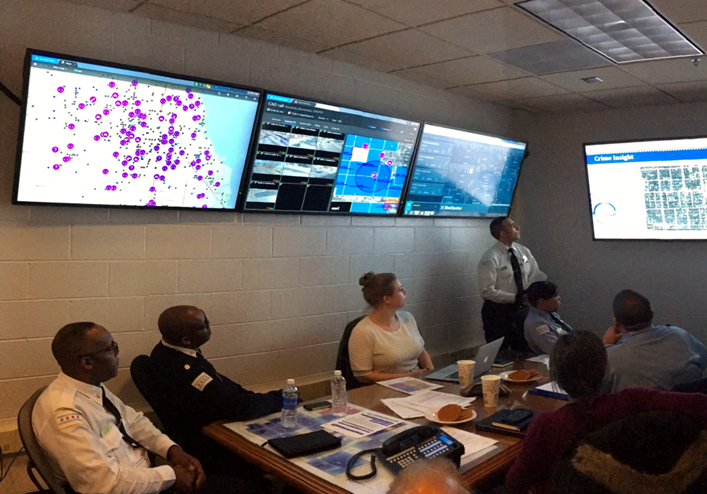Chicago, Illinois

Project Overview
The Chicago Smart Policing Initiative (SPI) site addressed violent crime through implementation and evaluation of the police department’s Strategic Decision Support Centers (SDSC) and a person-based risk model for violent crime victimization. Chicago’s SDSCs brings together police officers and analysts from the University of Chicago Crime Lab to integrate crime intelligence, data analysis, and technology in daily, real-time approaches to violent crime reduction and prevention. SDSC’s are equipped with a suite of information technology resources, including gunshot detection monitoring systems, access to a network of surveillance cameras, and predictive policing software that identifies the blocks within each district where gun violence is most likely to occur.
The Chicago SPI expanded SDSCs into six districts in the city, and evaluating the impact of this expansion on violent crime in the target districts and citywide. In addition, the SPI examined the effectiveness of the Crime and Victimization Risk Model designed to identify individuals at-risk of being a victim or perpetrator of a shooting and a custom notification system designed to direct these individual to support services.
Methods and Findings
Research Design
The SPI conducted a process evaluation of SDSCs for developmental and operational lessons learned. The site also employed a difference-in-difference models to estimate crime reduction effects resulting from adding an SDSC to a Chicago police district.
Findings
- Estimated crime reductions, depending on crimes and times modeled, varied between 3 percent and 17 percent.
- SDSCs estimated to reduce shootings by more than 40 percent in one district.
- Some SDSCs were fully integrated into their district’s full suite of operations; others could be characterized as being more than independent service units but not yet achieving a partial level of integration into operations.

